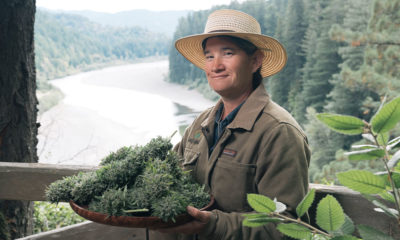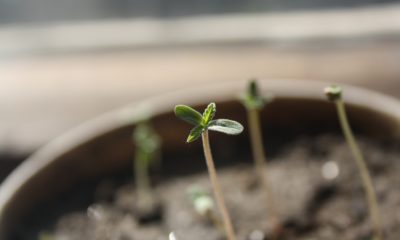
PHOTOS Harborside Health Center
Cultivation
What is The Difference Between Indica and Sativa?
We break down the difference between indicas and sativas from the effect to the medical application of both.
Walking into a dispensary can be pretty intimidating for a new patient or someone unfamiliar with all the endless varieties of cannabis. Cannabis strain names rarely are accurate descriptors of the effect a strain will have once consumed. How are you supposed to know which strain will be the best choice for you with names like Alaskan Thunderfuck, Cat Piss and Green Crack?
If you know the difference between indicas and sativas, you can make a slightly more informed decision. However, keep in mind that using the labels indica and sativa alone is not the only way to determine what type of high the strain will produce, and definitely not dosage. Other factors, such as terpene profiles, breeding, method of ingestion and growing conditions will alter the effects of the finished product as well.
Another important factor to remember, almost every strain you will come across is probably a hybrid of some sort. Dispensaries and books will classify a strain based on the ratio of the two types or, if they have a near-equal share of indica and sativa genetics they are usually referred to simply as a “hybrid”.
Sativas
Growing conditions
These plants originated around the equator and love the sun. They can grow very tall (up to 25 feet!) and have long thin blades. The buds grow in long sausage-like colas. They are usually lighter in color with pale greens and orange tones.
Effects
Sativas are known for their mental effect. They often induce feelings of euphoria, enthusiasm, creativity and sometimes paranoia. These strains will put a big dopey smile on your face and enhance outdoor activities like hiking and walking. Sativas can possibly be blamed for the giggles as well.
Medicinal Applications
Strains that are majority sativa are great for mental disorders such as depression and PTSD and sometimes anxiety. When using marijuana to treat anxiety, however, one should always start small so as not to induce paranoia and create further discomfort. These strains are also good to pair with others for the treatment of potentially fatal diseases, such as cancer, because they help treat the mind, not just the body.
Indicas
Growing Conditions
These plants originated at higher elevations and grow to only about six feet, maximum. They are bushy with short, fat blades. The buds grow much denser and are often darker colors such as purple or forest green.
Effects
Indicas are known for their physical effect. These are the strains that will relieve pain, nausea and insomnia. They usually slow a person down and are best consumed during activities such as sleeping or watching a movie. They also are munchie-inducing. Indicas also create an effect referred to as “couch lock”, the inability (or more accurately, lack of desire) to get off the couch.
Medicinal Applications
Strains that are majority indica are great for patients who have trouble sleeping, anxiety and extreme pain or are undergoing chemotherapy. They relieve nausea, allowing relief for patients suffering the effects of cancer treatments. Many people prefer indica strains for pain relief over prescription drugs because they can still feel the source of the pain without being burdened by it, preventing them from further injuring themselves. Indica strains are also great for people suffering from AIDS (wasting syndrome) and eating disorders because they encourage sick people to eat, which gives them energy to fight the disease.
TELL US, what variety you prefer? A blend of both?


























